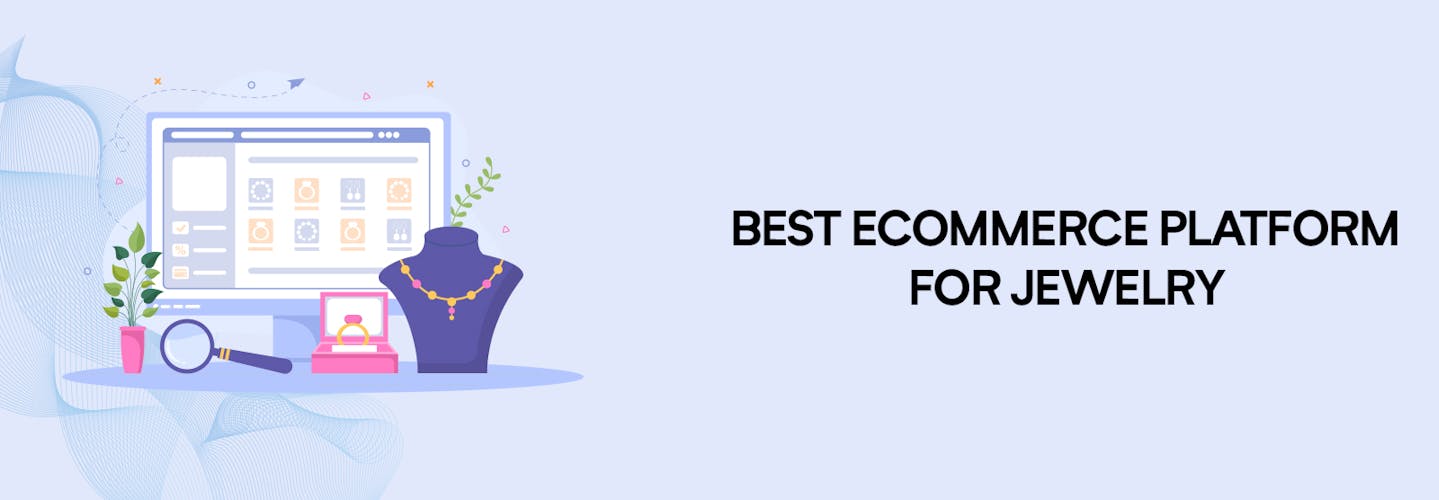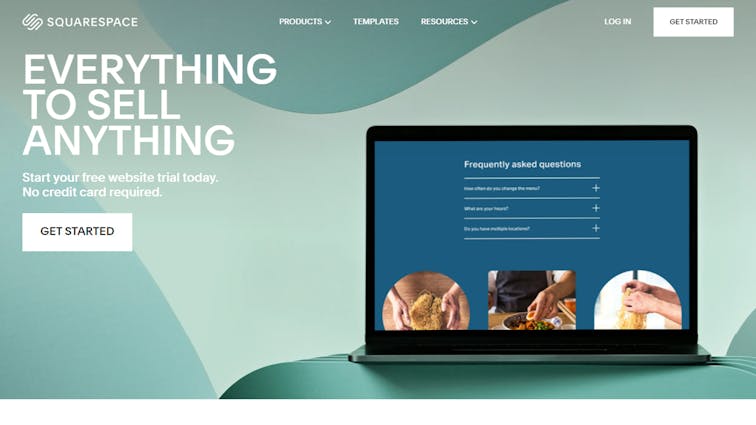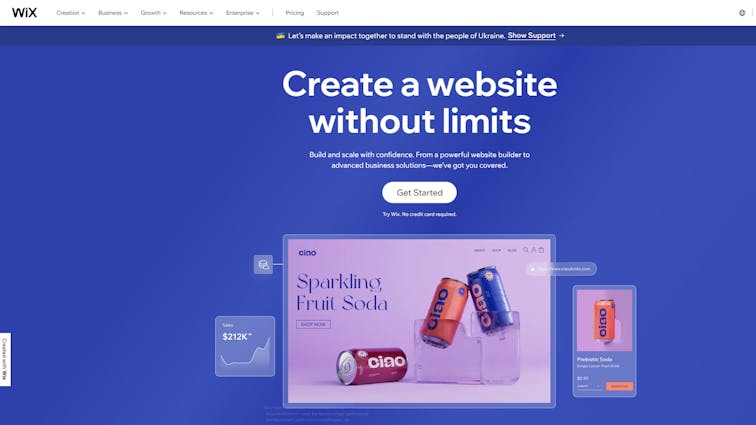
6 Best Ecommerce Platform For Jewelry in 2025
Welcome to the future of jewelry ecommerce! The year is 2025, and the stats are nothing short of dazzling.
According to industry reports, the global online jewelry market is expected to reach a staggering $340 billion by the end of this year.
So, what does this mean for you? Well, if you’re looking to sell jewelry online, there’s never been a better time to dive in.
But wait, you might be asking, “Which ecommerce platform should I use for my jewelry business?” Don’t worry; we’ve got you covered.
Why Jewelry? The Timeless Appeal
Jewelry has been a symbol of status, love, and personality for centuries. From the ancient Egyptians to modern-day fashionistas, jewelry has always had a special place in human culture.
But why? Simple.
Jewelry is not just an accessory; it’s an expression of who you are. It’s a jewelry business that never goes out of style.
So, if you’re looking to start an ecommerce store, why not go for something as evergreen as jewelry?
Is Selling Jewelry Online Profitable?
You bet it is! The jewelry ecommerce landscape is booming, and the profit margins are often much higher compared to other retail sectors.
For instance, the average markup for jewelry is around 25-75%, giving you ample room to make a healthy profit. Plus, the online marketplace has made it easier than ever to sell your jewelry to a global audience.
With the right ecommerce platform, you can set up an online store in no time and start cashing in on this lucrative market.
Is Jewelry a Good Ecommerce Business? The Sparkling Verdict

Yes, jewelry can be a good eCommerce business. The jewelry industry is one of the most lucrative businesses on the planet and its sales are booming.
The global jewelry market is steadily climbing in value each year. According to a Grand View Research report, the market may grow at a compound annual growth rate (CAGR) of 8.1%, reaching $480.5 billion in value by 2025.
However, like all online businesses, it’s not all that simple. It’s important to consider factors such as platform fees, competition, and marketing strategies when selling online. Also, keep in mind that while the profit margins can be high, so too can the initial costs of sourcing or creating the jewelry.
So, while it can be profitable, success in selling jewelry online requires careful planning and strategy.
Key Features to Look For in a Jewelry Business: The Crown Jewels of Success
So, you’re convinced that a jewelry business is the way to go. But what should you look for to ensure your venture is a sparkling success?
Let’s break down the key features that can make or break your online jewelry store.
1. High-Quality Product Images
When it comes to selling jewelry online, a picture is worth a thousand words. Your customers can’t physically touch or try on your products, so high-resolution, professional photos are a must. Make sure your ecommerce platform supports high-quality images and possibly 360-degree views to give customers a comprehensive look at your pieces.
2. Detailed Product Descriptions
You’ve got the visuals down, but what about the text? Detailed product descriptions can help fill in the gaps and answer questions your customers might have. Include information like material, size, care instructions, and any unique features. This not only helps the customer but also boosts your SEO structure.
3. Customization Options
People love to personalize their jewelry. Offering customization options can set your jewelry ecommerce store apart from the competition. Whether it’s engraving initials, choosing gemstone colors, or selecting chain lengths, make sure your ecommerce solution can handle these custom requests.
4. Secure and Easy Payment Gateways
Security is a big deal, especially when transactions of high-value items like jewelry are involved. Your ecommerce website should offer secure, easy-to-use payment gateways that instill trust and encourage customers to complete their purchases.
5. Virtual Try-Ons
With advancements in AR technology, virtual try-ons are becoming increasingly popular in the jewelry online market. This feature allows customers to virtually “wear” pieces before making a purchase, increasing both engagement and conversion rates.
6. Fast and Reliable Shipping
Let’s face it; no one likes to wait, especially after splurging on a shiny new piece of jewelry. Offering fast and reliable shipping options can be a game-changer for your jewelry business. Make sure to provide tracking options and insurance for higher-value items.
7. Customer Reviews and Testimonials
Word of mouth is golden in the jewelry business. Featuring customer reviews and testimonials not only builds trust but also adds a layer of authenticity to your brand. Encourage satisfied customers to leave reviews and showcase them prominently on your ecommerce platform.
The Best Ecommerce Platforms for Your Jewelry Business: The Crown Jewels of Online Retail
Alright, you’ve got the basics down, and you’re ready to take the plunge. But wait, which ecommerce platform should you choose for your jewelry business? The platform you pick can make a world of difference, so let’s dive into the top contenders that can help you sell jewelry online like a pro.
Choosing the right platform can make or break your business. Shopify, WooCommerce, and Magento are some of the big players. But if you’re looking for a zero-code, AI-driven platform, Aasaan is a fantastic option that caters specifically to SMEs.
1. Aasaan: The No-Code, API-First Marvel

Aasaan is a unique ecommerce platform that focuses on a no-code, API-first approach. It allows businesses to build visually stunning and high-converting headless storefronts without the need for coding. Aasaan promises a seamless shopping experience with lightning-fast site speed and a range of features to boost your jewelry business.
Pros
- Lightning-Fast Site Speed: Aasaan claims a 70% increase in site speed, ensuring a smooth customer experience.
- High Conversion Rates: Users can expect a 38% uplift in conversion rates, maximizing sales potential.
- API-First Approach: Seamless integration with your existing backend, allowing for a more flexible and robust ecommerce setup.
Cons
- Pricing: The platform doesn’t openly disclose its pricing, which could be a drawback for some businesses.
- Developer Reliance: While it’s a no-code platform, some businesses might still need developer assistance for more complex integrations.
Pricing
- Premium: Priced at $50 per month, this plan is for merchants and startups to help grow their business with branding.
- Business: At $165 per month, this plan is for advanced merchants and includes everything in the Premium plan, plus branded iOS and Android apps, full store access via backend API, webhooks, 5 inventory locations, 10 staff accounts, and unlimited integrations.
- Enterprise: This plan is designed for D2C brands looking for unlimited scalability, greater control, and dedicated resources. It includes everything in the Business plan, plus self-hosted storefronts for high performance, custom storefront themes, custom integrations, and 100% uptime SLA. The pricing for this plan is available upon contacting sales
2. Squarespace: The Design-Centric Platform

Squarespace is renowned for its design-centric approach, offering visually stunning templates that can make your jewelry ecommerce store look professional and appealing.
Pros
- Beautiful Design: Squarespace offers a range of professionally designed templates perfect for showcasing jewelry.
- Built-in SEO Tools: The platform comes with built-in SEO features to help your store rank higher in search engines.
- Ease of Use: The platform is user-friendly, making it easy for anyone to set up an online store.
Cons
- Limited Customization: While the templates are beautiful, they offer limited customization options.
- Pricing: Squarespace can be on the pricier side for small businesses.
Pricing
- Personal Plan: $12/month
- Business Plan: $18/month
- Commerce Plan: $26/month
3. Weebly: The Budget-Friendly Option
Weebly is a simple, drag-and-drop website builder that offers basic ecommerce features, making it a good option for those just starting out in the jewelry business.
Pros
- Affordability: Weebly offers a free plan and its paid plans are budget-friendly.
- Ease of Use: The drag-and-drop interface makes it easy for anyone to build a website.
- Basic SEO Tools: Weebly offers basic SEO tools to help your site get found online.
Cons
- Limited Features: Weebly lacks some of the advanced ecommerce features that other platforms offer.
- Limited Design Options: The platform offers fewer templates and customization options compared to others.
Pricing
- Free Plan: $0/month
- Professional Plan: $12/month
- Performance Plan: $26/month
4. Shopify: The All-in-One Powerhouse

Shopify is often considered the go-to platform for ecommerce, and for good reason. It offers a plethora of features, from inventory management to SEO tools, making it a comprehensive solution for any business, including jewelry.
Pros
- User-Friendly Interface: Even if you’re not tech-savvy, Shopify’s intuitive design makes it easy to set up your jewelry ecommerce store.
- Highly Customizable: With a vast array of themes and plugins, you can make your store as unique as your jewelry pieces.
- Robust Security: Shopify takes care of all security protocols, giving you and your customers peace of mind.
Cons
- Cost: Shopify isn’t the cheapest option out there. The basic plan starts at $29/month, and that’s before any add-ons.
- Transaction Fees: Unless you use Shopify Payments, you’ll incur additional transaction fees.
Pricing
- Basic Plan: $29/month
- Shopify Plan: $79/month
- Advanced Shopify: $299/month
5. Wix: The Creative’s Dream

Wix is known for its drag-and-drop interface, making it a favorite among creative entrepreneurs. It offers a range of beautiful templates perfect for showcasing your jewelry.
Pros
- Ease of Use: The drag-and-drop feature makes it incredibly easy to design your jewelry ecommerce website.
- Affordable: Wix offers competitive pricing, making it accessible for small businesses.
- SEO-Friendly: Wix has built-in SEO tools to help your store rank higher in search engines.
Cons
- Limited Scalability: As your business grows, you might find Wix less accommodating compared to other platforms.
- Less Robust: Wix is great for small businesses but lacks some of the advanced features that larger businesses may require.
Pricing
- Basic Plan: $23/month
- Unlimited Plan: $27/month
- VIP Plan: $39/month
6. BigCommerce: The Scalable Solution

BigCommerce is designed for businesses that are looking to scale. It offers a range of advanced features that can handle the complexities of a growing jewelry ecommerce business.
Pros
- Highly Scalable: BigCommerce can easily adapt as your business grows, making it a long-term solution.
- No Transaction Fees: Unlike Shopify, BigCommerce doesn’t charge additional transaction fees.
- Built-in Features: From SEO to payment gateways, BigCommerce offers a lot of features right out of the box.
Cons
- Complex Interface: The platform can be overwhelming for beginners.
- Pricing: The cost can add up as you start using more advanced features.
Pricing
- Standard Plan: $29.95/month
- Plus Plan: $79.95/month
- Pro Plan: $299.95/month
How to Choose the Right Ecommerce Platform for Your Jewelry Business ?

So, you’ve got the bling, but now you need the right platform to make it sing. How do you choose the right ecommerce platform for your jewelry business? Let’s dig in.
1. Understand Your Business Needs
First things first, you need to understand what you’re looking for. Are you a small business just starting out or a well-established brand looking to scale? Your needs will dictate the features you should prioritize.
2. Evaluate the Features
Look for essential features like high-quality image support, customization options, and secure payment gateways. If you’re planning to sell high-end jewelry, you might also want a platform that supports virtual try-ons.
3. Consider SEO Capabilities
SEO is the bread and butter of online visibility. Make sure the platform you choose has robust SEO tools to help your jewelry ecommerce store rank higher in search engines.
4. Check for Scalability
Your business will grow (positive thinking, right?), and your platform should be able to grow with you. Check how easy it is to upgrade your plan or add new features.
5. Read Customer Reviews
Don’t just take the platform’s word for it; see what other users have to say. Customer reviews can provide valuable insights into the platform’s pros and cons.
6. Test Customer Support
You’re going to need help at some point, so make sure customer support is up to snuff. Look for platforms that offer 24/7 support and have multiple channels like email, chat, and phone.
How to Attract Customers to Buy Jewelry: Sparkling Strategies for Success
Ah, the million-dollar question: how do you get people to part with their hard-earned cash and buy your shiny trinkets?
Here are some strategies to make your jewelry business irresistible.
1. Leverage Social Media
Instagram and Pinterest are your best friends. These platforms are visual-centric, making them perfect for showcasing your jewelry. Use high-quality images and don’t forget to engage with your audience.
2. Offer Limited-Time Promotions
Nothing gets people clicking the “buy” button faster than the fear of missing out. Offer limited-time promotions or exclusive items to create a sense of urgency.
3. Use Influencer Marketing
In the world of jewelry, word of mouth is golden. Partner with influencers who align with your brand to reach a wider yet targeted audience.
4. Provide Value
Don’t just sell jewelry; sell the experience. Offer styling tips, jewelry care guides, or interesting facts about the gemstones you use. This not only positions you as an authority but also adds value to your customers.
5. Implement a Loyalty Program
Reward your loyal customers with points or exclusive discounts. A well-implemented loyalty program can increase customer retention and turn one-time buyers into repeat customers.
How to Sell Jewelry Online Successfully: The Golden Blueprint

So you’ve got the platform, you’ve got the jewelry, but how do you actually make those sales? Here’s your step-by-step guide to selling jewelry online successfully.
1. Craft a Compelling Story
People don’t just buy jewelry; they buy the story behind it. Whether it’s the artisan craftsmanship or the unique design, make sure you have a compelling story that resonates with your target audience.
2. Optimize for Mobile
In 2025, a significant chunk of online shopping happens on mobile devices. Ensure your ecommerce website is mobile-friendly to capture this segment of shoppers.
3. Use High-Quality Photos and Videos
We’ve said it before, and we’ll say it again: high-quality visuals are crucial. Consider investing in professional photography and even short videos that showcase your jewelry from multiple angles.
4. Implement Secure Payment Options
Trust is key in online transactions. Make sure your ecommerce platform offers secure and diverse payment options to cater to different customer preferences.
5. Leverage Email Marketing
Don’t underestimate the power of a well-crafted email. Use email marketing to keep your customers updated on new collections, special discounts, and more.
How to Start a Small Jewelry Business from Home?
Starting a jewelry business from home has never been easier, thanks to the plethora of online resources available. Here’s how to get started.
1. Research the Market
Before you start designing, understand who your competitors are and what your target audience wants.
2. Source Quality Materials
Whether you’re making handmade jewelry or reselling pieces, the quality of materials is crucial. Source high-quality materials that resonate with your brand image.
3. Create a Business Plan
Outline your business goals, target audience, marketing strategies, and financial projections.
4. Choose the Right Ecommerce Platform
As we’ve discussed, the right ecommerce platform can make or break your business. Choose one that aligns with your needs and budget.
5. Market Your Business
Use social media, SEO, and email marketing to get the word out. Consider collaborating with influencers and bloggers to reach a wider audience.
What is the Profit Margin in the Jewelry Business?
The average gross profit margin for jewelry is between 42% and 47%. This includes all the factors involved in getting the jewelry to the shelf. However, this figure doesn’t include an allowance for overhead costs.
The profit margin for jewelry can vary depending on the type of jewelry and the brand:
- High-end jewelry brands may have profit margins of 50% or more.
- Mass-market jewelry brands often have profit margins in the 20-30% range.
- Colored stones typically have higher margins than diamonds.
Luxury jewelers who have built an impressive brand for their business may make more, whereas those just starting out may make less.
Ready to make your jewelry business the crown jewel of ecommerce? Book a consultation with us to find the perfect platform for your needs. Click here to get started!
Conclusion:
Selling jewelry online can be a lucrative venture with the right strategy. Ensure you stand out by emphasizing your unique selling points and providing exceptional customer service.
It’s necessary to understand the market dynamics, set up an ecommerce platform, invest in captivating imagery, provide secure payment options, master social media marketing, and build an effective loyalty program.
With meticulous research, sound strategies, persistent efforts, and a touch of sparkle, your jewelry business can shine brilliantly in the crowded ecommerce landscape.
Remember, your journey doesn’t stop at setting up an online store - continually testing, tweaking, and improving your strategies is the key to long-term success. Turn your sparkling dream into glistening reality now!
FAQ’s:
1. What is the Best Online Platform to Sell Jewelry?
Platforms like Shopify, Etsy, and WooCommerce have made it incredibly easy for anyone to start selling jewelry online. But if you’re looking for a zero-code, AI-driven platform, Aasaan could be your go-to. It’s designed for SMEs and offers an end-to-end infrastructure with zero dev time. The choice ultimately depends on your specific needs—whether you’re looking for customization, ease of use, or scalability. So, what’s your priority?
2. What is the Best Way to Sell My Jewelry?
The best way to sell your jewelry is to combine online and offline strategies. Online, leverage social media marketing, SEO, and email campaigns. Offline, consider pop-up shops or partnerships with established stores. The key is to understand your target audience and tailor your marketing strategies accordingly. Ever heard the saying, “Know your audience as you know yourself”? Well, it’s time to put it into practice.
3. How Do I Start a Successful Online Jewelry Business?
Starting a successful online jewelry business is like cooking a gourmet meal—you need the right ingredients and the perfect recipe. Here’s your recipe:
- Market Research: Know your competitors and target audience.
- Business Plan: Outline your mission, vision, and financial projections.
- Legalities: Register your business and get all the necessary licenses.
- Platform: Choose an e-commerce platform that suits your needs.
- Inventory: Source or create high-quality, unique jewelry.
- Marketing: Utilize SEO, social media, and email marketing.
- Customer Service: Provide exceptional customer service to build trust.
Sounds like a lot? Take it one step at a time.
4. How Profitable is Selling Jewelry Online?
The profitability of selling jewelry online can vary widely, but it’s generally a lucrative business. The jewelry industry is expected to reach $480 billion by 2025. Factors like your marketing skills, the uniqueness of your products, and your operational costs will determine your profit margins. So, can you turn your jewelry business into a goldmine? Absolutely, but it requires effort and smart strategies.
5. What DIY Jewelry Sells the Most?
When it comes to DIY jewelry, personalized items and unique, handcrafted pieces often sell the most. Think name necklaces, birthstone rings, and culturally inspired pieces. The more unique and high-quality your items are, the more they’ll stand out in a saturated market. So, are you ready to unleash your creativity?








